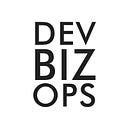Default Open
Once upon a time, a teenager dared to dream the impossible and created what became one of the most important companies on the planet. No, this was not wunderkinds like Mark Zuckerberg or Bill Gates or Steve Jobs. They were has-beens comparatively speaking.
The teenager I speak of was none other than Thomas Oscar, an Australian kid and founder of Stackswell & Co. What was his revolutionary idea and world changing mission? To move units.
Okay, maybe not the most disruptive idea, kind of up there with the product line of Spacely Sprockets. But it was one of the most interesting Facebook groups around, bringing together teenagers to “take the piss out of senseless bureaucracy” of generic office life.
A few weeks ago in Toronto, I spoke with a company about extending one of their platforms for use across the entire 10,000+ strong developer and IT team. He was he was excited to get started, expect for one reservation.
He took out his phone to show me the company’s Slack group. A small sampling of some of the content showed two Java framework channels talking about the same thing, multiple condo listing channels, and what appeared to be a cat video channel. It’s the real life Stackswell & Co.
The great thing about workplace collaboration tools is that they can bring the entire company together. The bad thing is that they bring the entire company together. Like the neighborhood coffee shop, you have lots of conversations, but not all of them are worth sharing with the entire organization.
Something of a mantra of mine in recent years is the idea of being “default open”. I define it as a cultural trait of companies that seek to operate in a more collaborative and transparent way.
Based on many conversations with companies of all sizes, I have found a few truisms around default open cultures. First is that startups tend to hew more towards openness than large enterprises, particularly compared with highly regulated industries. Second, greater openness leads to more innovative ideas, faster time to market, and higher productivity.
So why would enterprises not opt to be default open? It comes down to organizational complexity. As a company grows, more products are created, more teams are added, and geographic spread occurs. These teams become locked in a battle for their health and survival over the concerns of the entire organization. Take the friction between centralized Architecture groups and business lines that have competing priorities and success metrics.
Many organizations are trying to tackle this by leveraging technology, but the technology alone does not usher in a change in culture. In the drive to open up the culture and knockdown the silos, companies ran headfirst into the signal to noise conundrum.
While I try to repress memories of Signals and Systems class in my Electrical Engineering program, I do remember the lesson on signal to noise ratios. The higher the ratio, the better the quality of the signal and vice versa. Too much noise and nothing could be made out of the original content. It would be like having a deep conversation at a rock show.
Signal to noise ratio is a tough to get right in a social collaborative space. You run into two challenges. First is not everyone understands the rules of the community. Second, no one is empowered to enforce community norms.
We assume that people should know better. This is the unwritten social contract that informs us to refrain from double dipping chips, to not re-gift gifts, and to not talk so close to people. Yet people routinely ignore those common courtesies every day, especially in online forums.
Over the past few years, we have been studying community dynamics and online communities. What did we learn about maintaining high quality content in user driven communities? There are four key methods needed to ensure a healthy online community and encourage high quality contributions:
- Strategic Onboarding — Only invite people that are going to add the most value and best content at the launch. This is the velvet rope approach and is the most consistent means to ensure high quality content at the onset of launching a community.
- Empower Moderators — Individuals in the community need to be designated early on and given training and authority to enforce content standards. We recommend a handful of moderators to start and to make time for training sessions on moderation best practices.
- Community Monitoring — Empower the most engaged users to help maintain good content using mechanisms such as voting and reputation systems to gain more privileges which in turn opens up greater access to the community and more recognition.
- Structured Platform — Not every format works well to maintain high quality content. Messaging apps and discussion forums are too free-form and lead to the coffeeshop effect. Q&A, modern forums apps, and other structured platforms allow the best content to rise to the top and provides enough structure to maintain high quality contributions.
The problem many companies make is they buy the fancy new tool and leave it to chance to see what happens. That does not work well and leads to well founded complaints from IT leaders about failed attempts to build a truly collaborative community. If you take the four suggestions above however to heart, you will be ahead of the curve and on the path towards a successful and healthy community!
How have such workplace collaboration tools worked for your company? What have been the barriers in establishing an engaged internal community?
Make 5 5 5 5 = 19
Fun little puzzle with lots of interesting & creative responses…
We help IT leaders in enterprises solve the cultural challenges involved in digital transformation and move towards a community based culture that delivers innovation and customer value faster. Learn more about our work here.
